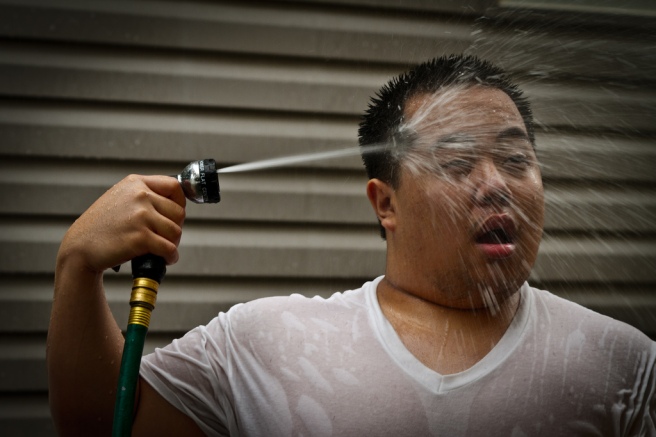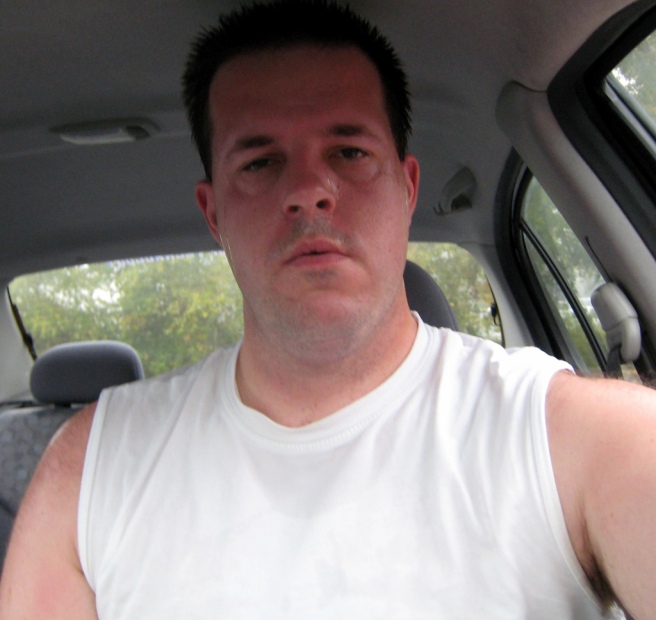BY: RICHARD HASKELL
Hot fun in the summertime!
Those words are just as true today as they were when recorded by Sly and the Family Stone back in 1969. Summer is about having fun in warmer temperatures, especially after another brutal winter and a cool spring, we certainly deserve it. Just a few short months ago we were protecting ourselves from the -30 wind chill, right?.
But warmer temperatures can also be too much of a good thing if the thermometer climbs above a certain level. Our body deals with the heat in different ways, by increasing the rate and depth of blood circulation, by losing water through the skin and sweat glands as perspiration and when coupled with strenuous activity, causing us to pant when the blood is heated above 37 degrees (98.6.) Under conditions of high temperature (above 32 degrees) and high humidity, the body does everything it can to maintain its regular normal temperature.
Spending too much time outside on a hot day can affect the body in a number of different ways, some of them debilitating. Little wonder that the dangers associated with high seasonal temperatures are sometimes referred to as silent killers.
Here are a few of them that we have to watch out for as we enjoy this all-too-brief season:
1. Dehydration

When the body becomes overheated, the blood is circulated closer to the skin’s surface and excess heat drains off into the cooler atmosphere. You body is always trying to maintain an even body temperature. Sweating reduces body heat through a process known as evaporative cooling. When we perspire, our bodies are cooled through evaporation from the skin, but if there is high humidity, the sweat stays on our skin and we feel little relief from the heat.
Hence, sweating by itself does nothing to cool the body, unless the water is removed by evaporation. Dehydration occurs when more than two per cent of normal water volume is lost. Symptoms may include thirst, headache, general discomfort, loss of appetite and dry skin. Severe dehydration can lead to dizziness or fainting, decreased blood pressure and listlessness. Whether it means carrying a water bottle or making frequent stops at a public fountain, keeping hydrated on a hot day is a given.
2. Heat Cramps

Anyone who has ever done heavy physical labour on a hot day may well have experienced muscle sprains or spasms known as heat cramps. They may occur in the abdominal area or the legs and can be very painful. Anyone suffering from heat cramps should immediately stop the activity and rest, while drinking sips of water or a sports drink. Try to gently stretch the cramped muscle, holding it for about 20 seconds before massaging it. If the sufferer ceases to have any symptoms of heat cramps he or she may resume some activity, but should refrain from any strenuous exercise for at least 24 hours.
3. Heat Exhaustion

Heat exhaustion is closely tied in with dehydration – it results from the loss of large quantities of water and salt. When these are not replaced, blood circulation diminishes, affecting not only the heart, but also the lungs and the brain. When heat exhaustion occurs, high humidity may cause perspiration not to evaporate so the body doesn’t cool properly. Symptoms may include skin which is moist, cool, pale – or sometimes red – heavy sweating headache, nausea, vomiting, dizziness and general inertia. Body temperature is usually normal. Heat exhaustion is best treated when the person afflicted rests in a cool place and consumes small amounts of water every 15 minutes. Clothing should either loosened or removed altogether and cool wet cloths applied to different parts of the body. If left untreated, the condition could potentially lead to heat stroke.
4. Heat Stroke

Heat stroke occurs when a person’s temperature control system – which produces perspiration to cool the body – stops functioning. This creates an increase in body temperature so high that either brain damage or death can result if steps are not taken immediately. Symptoms may include hot, red and dry skin, a rapid but weak pulse shallow breathing, high body temperature, dilated pupils, dizziness and weakness, vomiting and mental confusion. If you suspect a person is affected by heat stroke, it is imperative he or she be moved to a cool place and be wrapped in wet sheets. Ice packs should be placed on the victim’s wrists and ankles, in the armpits and on the neck in order to cool large blood vessels. Call 9-1-1 if the treatment is not producing the desired results.
5. Sun burn

Are you old enough to remember the days of, “I’m just going to lie out in the sun for a couple of hours and try to get a nice healthy tan?” The world has moved on since then, and most of us realize a tan is not healthy! Yes, the sun is life-giving and contributes to the production of vitamin D in the body, but over-exposure to ultraviolet rays over time have negative effects on the skin including sunburn, premature aging or an increased risk of skin cancer. After the winter, some people may wish to acquire the healthy glow a tan gives by starting out with a base tan using the facilities of an indoor tanning bed. But Dr. Anne Marie McNeill, a dermatologist with Newport Beach Dermatology and Plastic Surgery in California states on skincancer.org:
The problem is that ultraviolet (UV) tanning, whether from indoor tanning beds or from the sun, is harmful to the skin. Therefore, I don’t recommend tanning at all, during the summer or any other season. A tan is a sign of sun damage to your skin’s DNA. Skin cells respond to damage from UV rays by producing more of the pigment melanin to protect themselves from further injury.
Over-exposure to the sun results in a burn. Symptoms may include redness and pain, swelling of the skin blisters and in some cases, headaches and fever. It is best treated with ointments or in the case of broken blisters, dry sterile dressings. During the past twenty years, doctors have seen an alarming rate of increase in skin cancer of a type referred to as nonmylenoma – as much as 300 per cent and more than all other cancers combined . If detected early enough it can be treated successfully. If you must take some sun, do so for small intervals of time and always wear a lotion for protection.
Don’t let the heat get you

Enjoy the season! It’s a time for patios, cool drinks and taking life a little easier than at other times of the year – but never forget to take those precautions that come with the increase in warmer weather.
Dress for it! An all-black ensemble may be trendy, but leave it in the closet until September. Light-colored clothing reflects heat and sunlight, and helps your body maintain normal temperatures. Wear a hat to protect your face and head.
Even if you aren’t thirsty, be sure to drink plenty of liquids, and cut back on those iced lattes and cool pints of beer. Caffeine increases water loss through urination, and alcoholic drinks can also cause dehydration. Soft drinks and fruit juices usually contain high amounts of sugar, which means they aren’t absorbed as easily as water or a commercial sports drink.
It’s impossible to avoid the sun altogether during the summer, but don’t bask in it. Wear a protective sunscreen if you plan to be outside for any length of time-and go indoors to a cool environment if you feel any of the effect of too many ultraviolet rays.
But we’re not total downers – summer lasts only a few months, so make the most of it. Walk, hike, swim, bike, go for a leisurely stroll in a park or along the waterfront, or enjoy drinks (in moderation if they’re alcholholic!) on a patio. Because we all know how quickly -30 is going to come back..
Filed under: Summer safety, vacation Tagged: dehydration, heat stroke, Hot weather alert, skin cancer, summer, summer heat, summer safety
![]()
Source: BIST Blog





